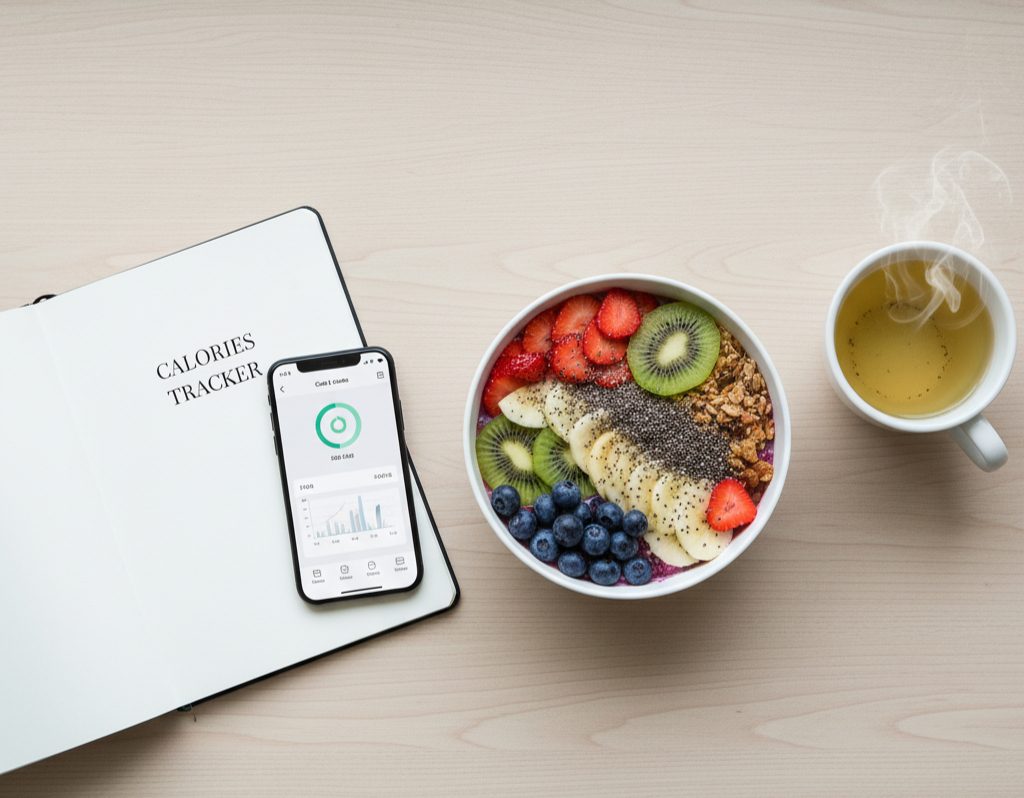Discover how calorie tracking helps you burn fat, stay consistent, and reach your fitness goals—without fads.

Calories 101: balance beats extremes
Few people truly grasp calorie science. Your body takes in energy with every bite and puts out energy with every step. Finding your balance—not just “eat less, move more”—is what makes weight loss effective and sustainable.
A daily calorie calculator is your best tool. It tells you how much to eat to fuel health and performance while losing fat (not muscle). Used correctly, it can transform your results whether you’re just starting or restarting.
What Is a Daily Calorie Calculator?
A daily calorie calculator estimates how many calories you burn each day using your age, gender, height, weight, and activity level. This total is your TDEE (Total Daily Energy Expenditure).
Compare TDEE to your intake to know whether you’re in a deficit (for fat loss) or surplus (for gain). Aim for a moderate deficit to lose fat without crushing metabolism.
Try the Daily Calorie Calculator on NutriFitCalc—fast, simple, and optimized for sustainable results.
How Calorie Calculation Works

Two people with the same weight can have different needs due to age, muscle mass, and lifestyle. Calculators estimate:
- BMR (Basal Metabolic Rate): calories at rest for essential functions.
- Activity: extra calories from movement, training, and chores.
- TDEE: BMR + Activity = total daily burn.
Find BMR with the BMR Calculator, then multiply by activity— or let the Daily Calorie Calculator do both automatically.
How to Use a Daily Calorie Calculator Effectively
Step 1 — Enter accurate information
Use your true age, height, weight, and typical activity. Small rounding errors reduce accuracy.
Step 2 — Understand your calorie goal
- To lose weight, reduce ~500 kcal/day below maintenance.
- To gain muscle, add ~250–300 kcal/day above maintenance.
Step 3 — Track your food
Log meals (apps or journal). Sauces, oils, and drinks count.
Step 4 — Recalculate regularly
Revisit the Daily Calorie Calculator every 3–4 weeks as weight or activity changes.
How Calorie Tracking Helps with Weight Loss
Builds awareness
Most of us underestimate intake—tracking teaches portions and patterns.
Creates consistency
Knowing your target makes planning meals and snacks simple.
Supports long-term results
Gradual, measured changes preserve metabolism and energy; crash diets don’t.
Example: Calculating Your Weight-Loss Calories
30-year-old woman, 65 kg, 165 cm, moderately active
- BMR ≈ 1,400 kcal
- TDEE ≈ 2,100 kcal
- Fat-loss target ≈ 1,600 kcal/day
A 500-kcal daily deficit ≈ ~0.5 kg (1 lb) per week.

Tips for Maximizing Your Results
- Choose whole foods: veggies, lean protein, complex carbs.
- Stay hydrated: water supports metabolism and appetite control.
- Prioritize protein: protects muscle and satiety.
- Sleep well: poor sleep disrupts hunger hormones.
- Exercise regularly: mix strength + cardio for best burn.
Also explore the BMI Calculator and Body Fat Calculator for a fuller health picture.
Common Mistakes When Using a Calorie Calculator
- Guessing portions instead of measuring.
- Forgetting oils, sauces, or snack calories.
- Cutting too low—metabolism and mood suffer.
- Not updating stats after progress or routine changes.
- Ignoring food quality—nutrients matter, not just numbers.
Curious about the science? See Harvard Health’s Guide to Healthy Weight Loss.
Why NutriFitCalc’s Daily Calorie Calculator Is Different
Building a Calorie-Based Weight Loss Plan
1) Plan balanced meals
Example for 1,600 kcal/day:
| Meal | Calories |
|---|---|
| Breakfast | ~400 |
| Lunch | ~500 |
| Dinner | ~500 |
| Snacks | ~200 |
2) Combine nutrition with activity
Use the Calories Burned Calculator to estimate output and keep intake balanced.
3) Track beyond the scale
Notice clothing fit, energy, mood, and performance—these often improve first.
Long-Term Weight Management
- Recalculate as weight or activity changes.
- Enjoy occasional treats—balance beats perfection.
- Stay active daily (NEAT counts: walking, stairs, chores).
- Focus on consistency, not extremes.
Tools like NutriFitCalc help you replace guesswork with informed decisions.
Final Thoughts
Lasting weight loss is about knowledge and balance—not rigid diets. A daily calorie calculator gives you that knowledge so you can eat with confidence and move with purpose.
FAQs
About the Author
This article is written by the NutriFitCalc Team, a group of Food Science and Nutrition students who create simple, research-backed guides for healthy living.
We review global health sources like WHO and CDC to keep our content accurate and helpful.
